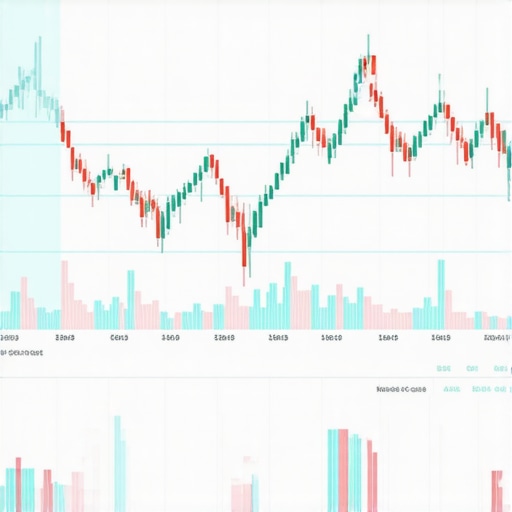Unveiling the Complexity of Gold Demand Dynamics in 2025
As global economic uncertainties and technological innovations intertwine, understanding the nuanced shifts in gold demand trends for 2025 becomes imperative for sophisticated investors. Gold, long heralded as a hedge against inflation and currency volatility, now navigates a landscape shaped by geopolitical tensions, central bank policies, and evolving consumer preferences. This article delves into the advanced factors influencing gold demand, providing an expert-level analysis crucial for strategic portfolio management.
Emerging Market Drivers and Their Impact on Gold Consumption
The burgeoning middle class in emerging economies, notably in Asia and Africa, continues to elevate demand for gold in jewelry and investment sectors. According to a report by the World Gold Council, these markets are projected to account for a significant portion of global demand, driven by cultural factors and increased wealth accumulation. Recognizing these demand drivers allows investors to anticipate supply-demand imbalances and price trajectories in 2025.
Central Bank Gold Purchases: A Strategic Shift?
Central banks are resuming gold acquisitions as part of their reserve diversification strategies, especially amidst fluctuations in the US dollar and geopolitical uncertainties. Analyzing central bank policies reveals a strategic shift that could underpin sustained demand for gold, influencing market prices and volatility patterns. This trend underscores the importance of monitoring official sector moves in shaping 2025’s gold market.
What are the implications of evolving geopolitical tensions on gold demand in 2025?
Geopolitical tensions, including trade disputes and regional conflicts, often drive investors towards safe-haven assets like gold. The ongoing geopolitical landscape suggests a potential increase in demand from institutional investors seeking diversification and risk mitigation. This scenario warrants a deep analysis of geopolitical risk indices and their correlation with gold price movements.
Technological Innovations and Their Effect on Gold’s Investment Appeal
Blockchain technology and the rise of digital gold platforms are transforming how investors access and trade gold, expanding its appeal beyond traditional markets. The integration of gold ETFs and mutual funds facilitates liquidity and transparency, making gold an even more attractive component of diversified portfolios. Staying ahead of these technological shifts is essential for informed decision-making in 2025.
Expert Strategies for Navigating the 2025 Gold Market
To capitalize on the anticipated demand fluctuations, investors should consider a multi-faceted approach: analyzing market dynamics, employing effective trading techniques, and diversifying across physical gold, ETFs, and mining stocks. Such strategies mitigate risks and optimize returns amidst evolving demand patterns.
Conclusion: The Strategic Outlook for Gold Investors in 2025
Understanding gold demand trends for 2025 requires a comprehensive analysis of macroeconomic, geopolitical, and technological factors. As demand from emerging markets, official reserve shifts, and innovative trading platforms converge, investors equipped with expert insights are positioned to make informed, strategic decisions. Continuous monitoring of market forecasts and demand indicators will be critical for capitalizing on upcoming opportunities in this dynamic landscape.
Deciphering the Role of Digital Innovation in Shaping Gold Demand in 2025
The advent of blockchain technology and the proliferation of digital gold platforms are revolutionizing traditional gold investment paradigms. These innovations facilitate seamless trading, enhance transparency, and broaden access for retail and institutional investors alike. As gold ETFs and mutual funds gain popularity, understanding their impact on demand dynamics becomes crucial for strategic portfolio management.
How Will Geopolitical Tensions Continue to Influence Gold’s Safe-Haven Status?
Geopolitical conflicts, trade disputes, and regional tensions often drive investors toward safe-haven assets like gold. Experts predict that increasing geopolitical uncertainty will sustain or even elevate gold demand in 2025, especially from institutional investors seeking diversification. Analyzing global risk indices alongside market sentiment can provide valuable insights into potential price movements, making this a vital component of advanced investment strategies. For a comprehensive understanding, review market analysis reports.
What are the emerging tools and frameworks for sophisticated gold market analysis in 2025?
Investors and analysts are increasingly adopting quantitative models, machine learning algorithms, and real-time data analytics to forecast gold price trajectories. These tools enable a nuanced understanding of supply-demand shifts, macroeconomic indicators, and geopolitical developments. For instance, integrating market dynamics analysis with advanced technical analysis techniques can significantly enhance decision-making precision. Staying at the forefront of these technological advancements is essential for maximizing gains in 2025.
Need more insights? Follow discussions in trusted financial analysis forums or subscribe to expert newsletters to keep updated on evolving market tools and strategies.
The Strategic Significance of Gold Mining Stocks and Their Future Outlook
Beyond physical gold and ETFs, investing in gold mining stocks presents a compelling opportunity for higher growth potential. Analyzing the operational efficiency, geopolitical exposure, and technological innovations within mining companies can yield valuable insights. According to a recent industry report, stocks of well-managed gold miners are poised to outperform in the current environment, especially as production costs fluctuate and demand surges. To explore this further, visit gold mining stock analysis.
Share your thoughts or questions in the comments—how do you see the role of gold mining stocks evolving in your portfolio for 2025?
Harnessing Advanced Data Analytics to Decode Gold Demand in 2025
As we venture deeper into 2025, the sophistication of market analysis tools continues to evolve. Investors are increasingly leveraging big data, machine learning models, and real-time analytics to forecast gold price movements with unprecedented precision. These technologies analyze a multitude of variables, including macroeconomic indicators, geopolitical risk indices, and supply chain dynamics, enabling a nuanced understanding of demand fluctuations.
For instance, integrating predictive analytics with sentiment analysis derived from global news feeds allows investors to anticipate shifts driven by geopolitical tensions or policy changes. This convergence of data science and traditional market analysis transforms the gold investment landscape, offering a strategic edge for those who harness these tools effectively.
The Role of Geopolitical Risk Indices in Shaping Gold Demand Dynamics
In 2025, the geopolitical environment remains a pivotal factor influencing gold’s safe-haven appeal. Advanced risk indices, such as the Global Conflict Risk Index (GCRI), quantify regional instability and predict potential surges in gold demand. These indices incorporate variables like military conflicts, diplomatic tensions, and economic sanctions, providing a comprehensive risk landscape.
By analyzing correlations between these indices and gold price trends, investors can develop timing strategies to optimize entry and exit points. For example, a rising GCRI score may signal an impending demand spike, prompting strategic accumulation of gold assets ahead of price rallies.
What are the emerging frameworks for integrating geopolitical risk analysis into gold investment strategies?
Innovative frameworks now combine quantitative risk indices with machine learning algorithms to generate actionable insights. These models continuously learn from new data, refining their predictive accuracy. Incorporating scenario analysis and stress testing further enhances resilience against unpredictable geopolitical developments.
To stay ahead, investors should explore platforms offering integrated risk analytics, such as Bloomberg Terminal or specialized geopolitical risk dashboards. These tools empower sophisticated decision-making in an increasingly complex global environment.
Technological Disruptions and Their Impact on Gold’s Investment Ecosystem
The advent of blockchain technology and decentralized finance (DeFi) platforms is revolutionizing gold investment avenues. Digital gold tokens, backed by physical reserves, offer liquidity and fractional ownership, expanding access to a broader investor base. Moreover, the transparency and security features inherent in blockchain systems mitigate counterparty risks associated with traditional gold markets.
Emerging innovations like tokenized gold enable real-time settlement and seamless transferability, aligning with the needs of institutional investors and retail traders alike. These developments are poised to significantly influence demand patterns, especially as regulatory frameworks evolve to accommodate digital assets.

Strategic Portfolio Integration: Balancing Physical, Digital, and Mining Stocks
To navigate the complexities of 2025’s gold market, portfolio diversification must extend beyond physical holdings. Allocating strategically across physical gold, digital tokens, ETFs, and mining stocks creates a resilient multi-layered approach. Each asset class responds differently to macroeconomic, geopolitical, and technological shifts, providing a hedge against volatility.
For example, while physical gold offers stability, mining stocks can capitalize on operational efficiencies and industry innovations, potentially delivering higher returns during bullish phases. Digital gold, on the other hand, provides liquidity and ease of access, catering to the growing digital investor demographic.
Implementing this integrated strategy requires continuous monitoring of market signals, technological developments, and policy changes. Advanced portfolio analytics platforms can facilitate dynamic rebalancing, ensuring alignment with evolving market conditions.
Future Research Directions and Practical Applications for Investors
Looking ahead, the integration of artificial intelligence and quantum computing in gold market analysis promises to unlock new frontiers of predictive accuracy. Researchers are exploring quantum algorithms capable of processing vast datasets to identify subtle market signals, potentially forecasting demand surges before they materialize.
Practically, investors should engage with interdisciplinary research combining economics, data science, and geopolitical studies. Collaborating with market analysts and leveraging emerging tools can enhance strategic positioning in 2025 and beyond.
Want to deepen your understanding of these advanced strategies? Join expert webinars, subscribe to specialized financial analysis journals, or consult with a certified investment strategist to refine your approach to gold investing in 2025 and future years.
Deciphering the Impact of Geopolitical Risk Indices on Gold Demand in 2025
As geopolitical risks continue to escalate, sophisticated investors are turning to quantitative risk indices like the Global Conflict Risk Index (GCRI) to forecast potential surges in gold demand. These indices synthesize variables such as military conflicts, political instability, and economic sanctions, providing a comprehensive risk landscape. Analyzing the correlation between rising GCRI scores and gold price trajectories enables the development of tactical entry points, allowing investors to preemptively position themselves before demand spikes materialize. For an in-depth understanding, consult the detailed methodologies outlined by the World Conflict Risk Index.
Leveraging Cutting-Edge Data Analytics for Precision Market Forecasting
The integration of big data, machine learning algorithms, and real-time analytics is revolutionizing gold market predictions. Advanced models analyze macroeconomic indicators, geopolitical developments, and supply chain dynamics, enabling nuanced demand forecasts. For example, sentiment analysis of global news feeds combined with predictive analytics can signal market shifts driven by political upheavals or policy changes. This convergence of data science and traditional market analysis equips investors with a strategic edge, facilitating proactive decision-making in the complex 2025 landscape. To explore these tools, consider platforms like Bloomberg Terminal or specialized AI-driven analytics services.
What are the emerging frameworks for integrating geopolitical risk analysis into gold investment strategies?
Innovative frameworks now incorporate machine learning-enhanced geopolitical risk models with scenario analysis, stress testing, and continuous learning algorithms. These systems adapt to new data, refining their predictive capabilities to anticipate market movements driven by regional tensions. Implementing such frameworks involves utilizing advanced risk analytics platforms, such as those offered by Bloomberg or Reuters, which aggregate diverse data sources and provide actionable insights. Engaging with these tools allows investors to formulate resilient strategies and optimize portfolio allocations amidst geopolitical volatility.
The Role of Blockchain and Digital Gold Platforms in Reshaping Demand
The proliferation of blockchain technology and decentralized finance (DeFi) platforms is transforming gold investment landscapes. Digital gold tokens, backed by physical reserves, offer unparalleled liquidity, fractional ownership, and transparency. These innovations facilitate seamless trading and settlement, appealing to both retail and institutional investors seeking efficient exposure to gold. As regulatory frameworks evolve to accommodate digital assets, the demand for tokenized gold is expected to accelerate, further diversifying the investment ecosystem. Understanding these technological disruptions is crucial for strategic allocation in 2025 and beyond.
How Can Advanced Portfolio Strategies Balance Physical, Digital, and Mining Stocks for Optimal Resilience?
Effective portfolio diversification in 2025 requires a nuanced approach that balances physical gold holdings, digital tokens, ETFs, and mining stocks. Physical gold provides stability, digital assets offer liquidity and accessibility, and mining stocks can capitalize on operational efficiencies and technological advancements. Implementing dynamic rebalancing through sophisticated analytics platforms enables investors to adapt swiftly to evolving market signals, macroeconomic shifts, and technological developments. This multi-layered strategy mitigates risks and enhances potential returns, ensuring resilience amid volatility.
Future Directions: Quantum Computing and AI in Gold Market Prediction
Emerging quantum computing technologies combined with artificial intelligence promise to revolutionize gold demand forecasting. Quantum algorithms can process vast datasets, uncovering subtle market signals and complex interactions that traditional models may overlook. Researchers are exploring their application in predicting demand surges, supply disruptions, and geopolitical shocks. Investors should stay abreast of developments in this field, engaging with interdisciplinary research and leveraging predictive tools to gain a strategic advantage in the evolving 2025 market landscape. To deepen your understanding, subscribe to leading financial tech journals and participate in industry symposiums.
Expert Insights & Advanced Considerations
1. Diversification Beyond Traditional Assets
As geopolitical tensions and technological innovations accelerate, diversifying into a mix of physical gold, ETFs, and mining stocks is crucial for resilience in 2025. Experts recommend analyzing macroeconomic indicators alongside geopolitical risk indices to optimize asset allocation strategies, ensuring robust protection against volatility.
2. The Growing Role of Digital Gold Platforms
Blockchain and DeFi innovations are transforming gold investment by offering fractional ownership and enhanced transparency. Staying informed about regulatory developments and technological advancements in digital gold is essential for leveraging these tools effectively in portfolio management.
3. Advanced Analytical Tools for Market Forecasting
Quantitative models, machine learning, and big data analytics are now indispensable for predicting demand shifts. Investors should explore platforms integrating these technologies, such as Bloomberg Terminal or AI-driven analytics services, to gain a strategic edge in 2025.
4. Monitoring Geopolitical Risk Indices
Indices like the GCRI provide real-time insights into regional instability, aiding timely investment decisions. Incorporating scenario analysis and stress testing into risk management frameworks enhances resilience against unpredictable geopolitical shocks.
5. Integration of Quantum Computing and AI
Emerging quantum algorithms combined with AI have the potential to revolutionize demand forecasting by uncovering subtle market signals. Engaging with interdisciplinary research and staying updated on technological breakthroughs can position investors ahead of the curve.
Curated Expert Resources
- World Gold Council: Offers comprehensive reports on global gold demand trends, invaluable for strategic insights.
- Bloomberg Terminal: Provides real-time data analytics and risk indices, essential for sophisticated market analysis.
- Blockchain and DeFi platforms: Leading providers and platforms that facilitate digital gold trading and investment, such as Paxos Gold and Tether Gold.
- Academic and Industry Journals: Publications like the Journal of Gold Markets and MIT Technology Review for cutting-edge research on AI, quantum computing, and market dynamics.
Final Expert Perspective
Understanding gold demand trends for 2025 requires a nuanced approach integrating macroeconomic, geopolitical, and technological insights. As digital innovation and geopolitical risks shape the landscape, sophisticated investors must harness advanced analytical tools and emerging frameworks to craft resilient strategies. Staying informed through authoritative resources and engaging with interdisciplinary research will be key to capitalizing on opportunities in this dynamic environment. For those committed to strategic mastery, continuous learning and active engagement with expert communities are invaluable—venture beyond conventional wisdom, and position yourself at the forefront of the evolving gold market landscape.










